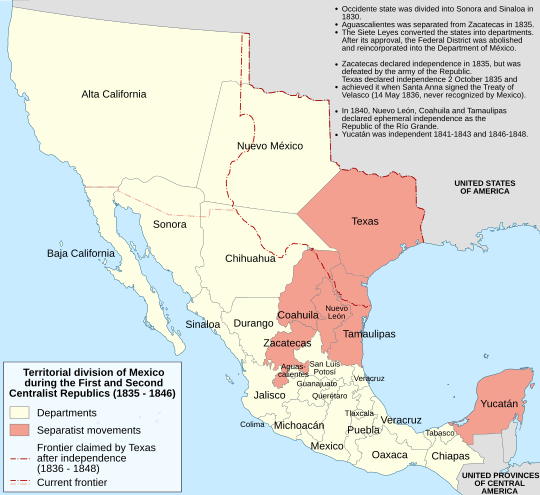Runaway Scrape facts for kids
The Runaway Scrape was a series of events that happened in Texas between September 1835 and April 1836. During this time, many Texas residents had to leave their homes quickly. They were trying to escape the Mexican Army, which was fighting in the Texas Revolution. This period covered the time from the famous Battle of the Alamo all the way to the important Battle of San Jacinto.
The new government of the Republic of Texas, which was set up for a short time, and many regular people fled east. They moved ahead of the Mexican soldiers. This conflict started because Antonio López de Santa Anna took control and put the area of Coahuila y Tejas under military rule. The people of Texas, called Texians, didn't agree with this and declared their independence. It was Sam Houston's job to lead the Texian Army. He had to gather and train soldiers to protect everyone from Santa Anna's troops.
Why People Fled Their Homes
People living near the Gulf Coast and in San Antonio de Béxar started leaving as early as January 1836. They heard that the Mexican army was moving into their area. This fear and need to escape soon spread across all of Texas.
Fears and Mass Exodus
At first, some Texian soldiers gave up, thinking they would be taken as prisoners of war. However, Santa Anna ordered that they be killed instead. News of the terrible Battle of the Alamo and the Goliad massacre made people very scared. This led to a huge number of people leaving the town of Gonzales. Gonzales was where the Texas Revolution had begun. Just days before the Alamo fell, people from Gonzales had sent help to the fighters there.
The people fleeing were joined by the new Texian army, which was still forming. Sam Houston needed time to train his soldiers and build an army strong enough to fight Santa Anna's larger forces. To keep supplies and homes from falling into the hands of the Mexican army, the towns of Gonzales and San Felipe de Austin were burned.
About 5,000 scared residents of New Washington also ran away from the Mexican army. After training his troops for a little over a month, Houston made a big decision. He sent some of his soldiers to help the refugees move further east. Meanwhile, he took the main army southeast to face the Mexican army.
The End of the Scrape
The final battle, the Battle of San Jacinto, resulted in Santa Anna's surrender. This led to the signing of the Treaties of Velasco, which helped Texas gain its independence.
Images for kids
-
Replicas of the Twin Sisters at San Jacinto Battleground State Historic Site






